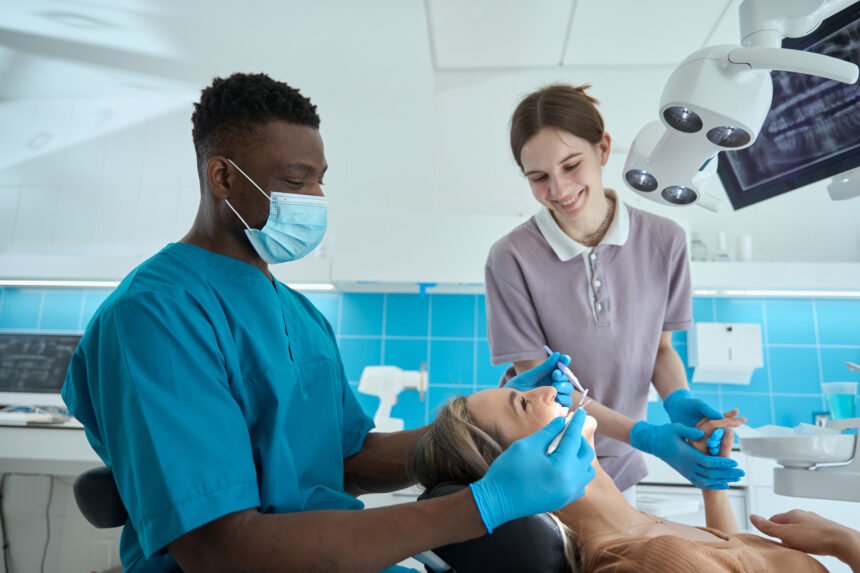Regular dental checkups are an essential part of keeping your smile bright and your teeth healthy. But if you’re unsure what happens during these visits, don’t worry! Here’s a friendly guide to help you feel more comfortable and prepared for your next Dental Exams.
Step 1: A Chat About Your Health
Your dentist will begin by asking about your medical and dental history. This includes any medications you’re taking, allergies you might have, or other health conditions that could affect your teeth and gums. They want to get a complete picture of your overall health to provide the best care possible.
Step 2: A Close-Up Look
Next, your dentist will carefully examine your mouth, teeth, gums, and throat. They’re looking for any signs of trouble, like cavities, gum disease, or even oral cancer. This thorough check helps catch problems early on, when they’re often easier to treat.
Step 3: Time for a Cleaning
Your friendly dental hygienist will then get to work, giving your teeth a professional cleaning. They’ll use special tools to remove plaque and tartar (hardened plaque) that your toothbrush might have missed. This helps prevent cavities and keeps your gums healthy. They’ll also polish your teeth to remove stains and floss between them to reach those tricky spots.
Step 4: A Deeper Look with X-Rays
Sometimes, your dentist will recommend taking X-rays. These pictures provide a detailed view of your teeth and jawbone, revealing any hidden issues like tooth decay, impacted teeth, or bone loss. Don’t worry; they’ll take safety precautions, like using a lead apron to protect you from unnecessary radiation.
Step 5: Checking Your Gums
Healthy gums are essential for a healthy smile. Your dentist or hygienist will measure the tiny pockets around your teeth and check for any signs of gum disease. This is done by gently probing your gums and looking for bleeding, swelling, or deep pockets.
Step 6: Screening for Oral Cancer
Your dentist will also examine the soft tissues of your mouth, including your lips, tongue, cheeks, and throat. They’re looking for any unusual lumps, sores, or discolored areas that could be early signs of oral cancer.
Step 7: Evaluating Your Bite and Jaw
How your teeth fit together and how your jaw moves are important for overall oral health. Your dentist will check your bite and jaw joints for any problems that could cause discomfort or pain.
Step 8: A Fluoride Boost (Optional)
Depending on your needs, your dentist may offer a fluoride treatment. Fluoride helps strengthen your teeth’s enamel, making them more resistant to cavities. It’s especially beneficial for children, but adults can benefit too.
Step 9: Your Personalized Care Plan
Based on your exam and cleaning, your dentist will discuss their findings and recommend any necessary treatment or follow-up. They’ll also give you personalized tips on how to brush, floss, and choose oral care products to keep your smile in tip-top shape.
Don’t Hesitate to Ask Questions!
Remember, your dental team is there to help you feel comfortable and informed. Feel free to ask any questions you have about your exam or treatment options. By working together, you can achieve and maintain a healthy, happy smile for years to come.


